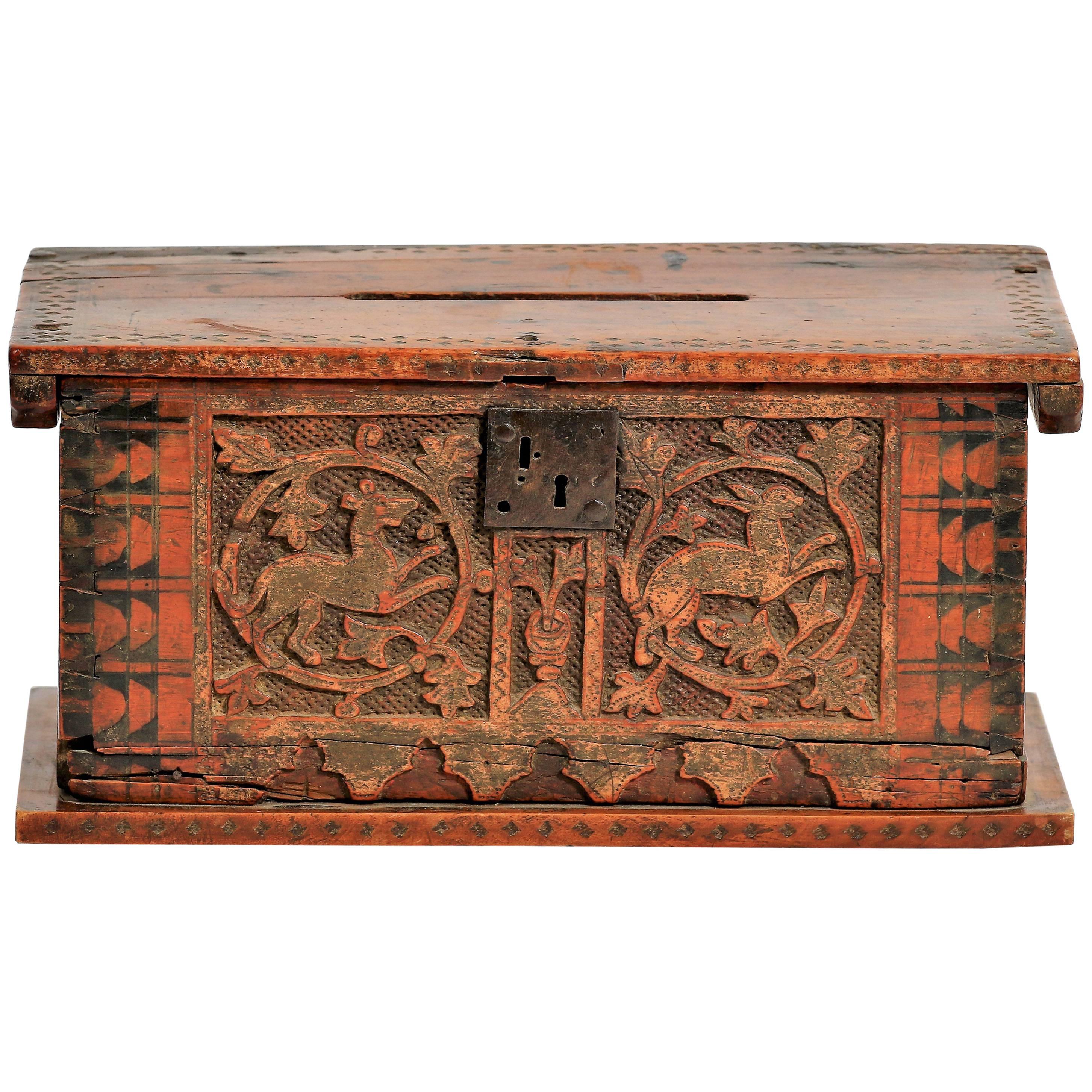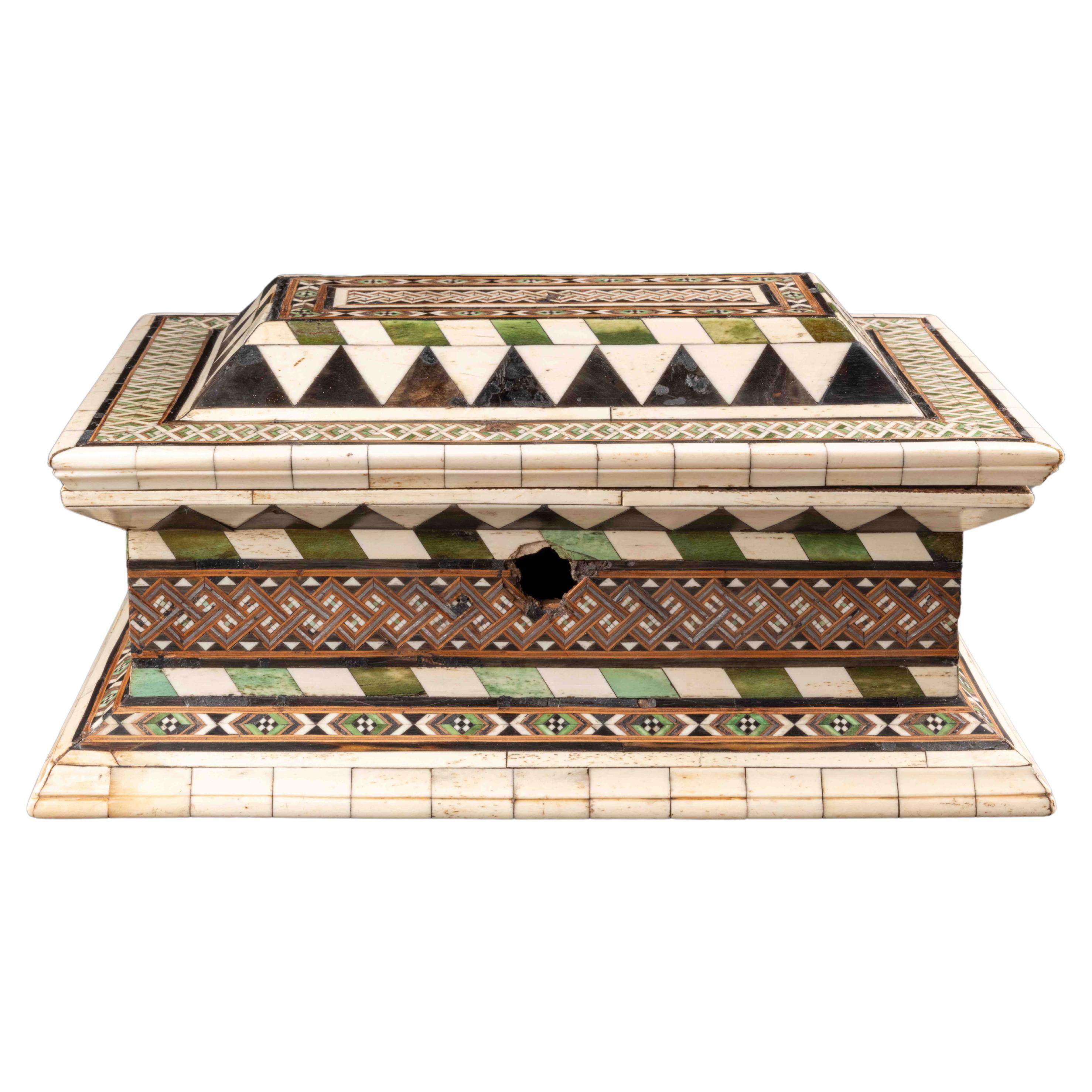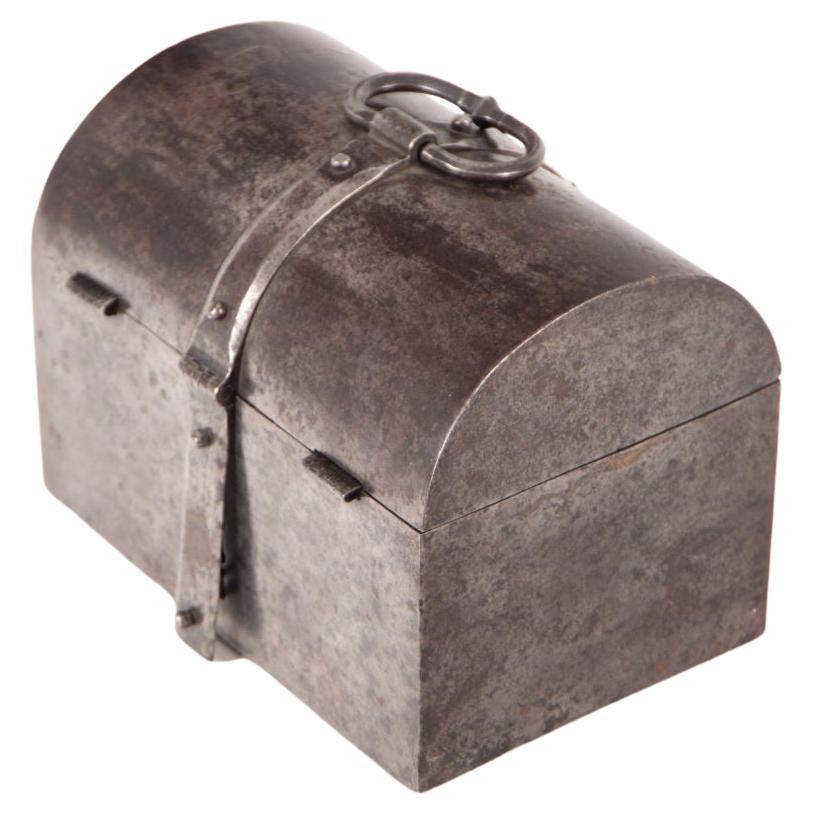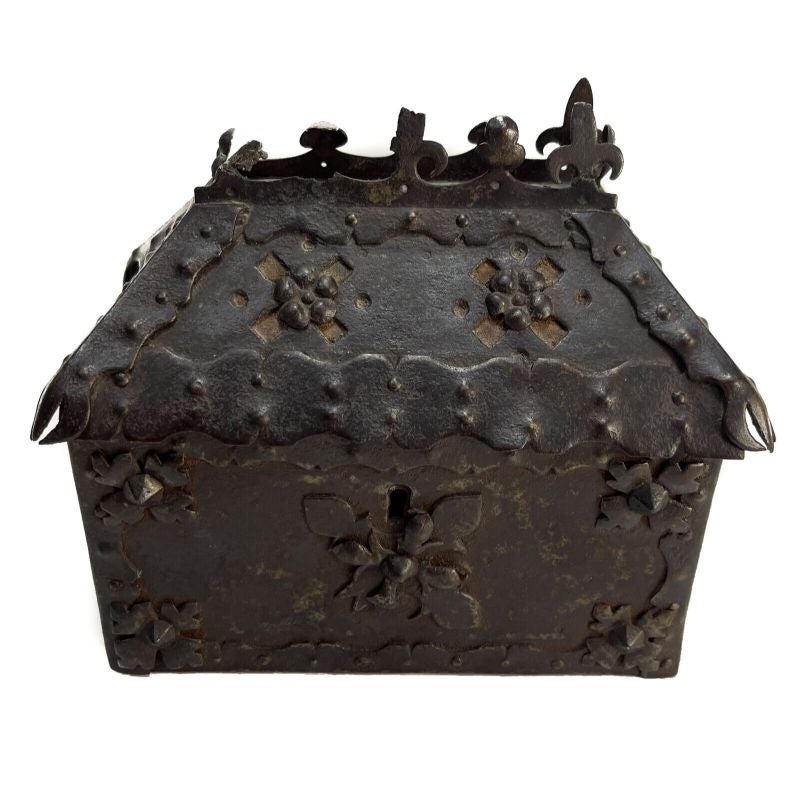Items Similar to 15th Century Offertory Box Very Very Rare
Want more images or videos?
Request additional images or videos from the seller
1 of 8
15th Century Offertory Box Very Very Rare
About the Item
From the Elisabeth Gasthouse clinic in Diest Flanders between 1250 and 1450
After that year owners changed
More info on the internet
Or mail me
Very rare peace with big history and strange stories!
- Dimensions:Height: 16.54 in (42 cm)Width: 5.52 in (14 cm)Depth: 6.3 in (16 cm)
- Style:Baroque (Of the Period)
- Materials and Techniques:
- Place of Origin:
- Period:
- Date of Manufacture:1450
- Condition:Wear consistent with age and use.
- Seller Location:Diest, BE
- Reference Number:1stDibs: LU2714313955212
About the Seller
5.0
Vetted Seller
These experienced sellers undergo a comprehensive evaluation by our team of in-house experts.
1stDibs seller since 2017
25 sales on 1stDibs
Typical response time: 1 hour
- ShippingRetrieving quote...Ships From: Diest, Belgium
- Return PolicyThis item cannot be returned.
More From This SellerView All
- Hat Box Leather 18th Century Empty Red VelvetLocated in Diest, Vlaams BrabantHat box empty intact. Measure: 32 cm.Category
Antique Late 19th Century English Victorian Decorative Boxes
MaterialsLeather
- Leather Hat Box with High Hat, 19th CenturyLocated in Diest, Vlaams BrabantLeather hat box with original high gentlemen’s hat. Measure: 32 cm.Category
Antique Late 19th Century English Victorian Decorative Boxes
MaterialsAnimal Skin
- Hat Box and Chapeau Claque Paris, 19th CenturyLocated in Diest, Vlaams BrabantOriginal hat and box off a chareau claque foldable high gentlemen’s hat. Measures: 35 x 12 cm.Category
Antique Early 19th Century English Victorian Decorative Boxes
MaterialsSuede
- Metal Hat Box in Trompe l'oeil, 19th CenturyLocated in Diest, Vlaams BrabantMetal hat box Painted in trompe l'oeil, 19th century. Measures: 40 x 33 x 28 cm.Category
Antique Late 19th Century English Victorian Decorative Boxes
MaterialsMetal
- Metal Hat Box in Trompe l'oeil, 19th CenturyLocated in Diest, Vlaams BrabantMetal hat box in trompe l'oeil. Measures: 35 x 25 x 22 cm.Category
Antique Late 19th Century English Louis Philippe Decorative Boxes
MaterialsMetal
- Silver German Military Epaulets 19th Century Complete with Original BoxLocated in Diest, Vlaams BrabantA crazy and very decorative item silver epaulets of a 19th century German officer in a complete an original and beautiful box description inside in German.Category
Antique 1870s German Louis XVI Decorative Boxes
MaterialsSilver
You May Also Like
- Very Rare Casket Minnekästchen or Box, Germany or Italy, 15th CenturyLocated in Beuzevillette, FRWooden coffret, call minnekästchen, engraved with a dog, a hare and foliage with polychromy remains. During the Middle Age, the hare is a symbol of fertility, joy and represents the Christ...Category
Antique 15th Century and Earlier European Gothic Decorative Boxes
MaterialsIron
- Very Rare 17th Century Charles II English BoxLocated in Greenwich, CTA very rare and desirable 17th century English oak box having moulded front and sides, original lock plate, drop pulls and bun feet, with superb color and patination. The box is made...Category
Antique 18th Century and Earlier English Boxes
MaterialsOak
- Embriachi workshop marquetry casket - Northern Italy, 15th centuryLocated in Bruxelles, BEEmbriachi workshop marquetry casket Northern Italy, 15th century Alla certosina inlays (bone, stained bone, pewter and wood) H 28.2 x W 18 x D 14 cm This beautiful casket of rectangular form is richly decorated with the characteristic geometric patterns of the Embriachi style. The intricate geometric patterns are fashioned by juxtaposing lighter and darker pieces of wood, (colored) bone, horn and pewter. The lid and base are framed by a broad band of horn. When ivory became scarce in Europe due to disrupted trade routes, bone was substituted. The attention to Symmetry and balance created an harmonious visual effect Enhancing the overall aesthetic appeal of the casket. The application of geometrical motifs is in Italy known as marquetry ‘alla Certosina’, named after the Certosina Church in Pavia with its famous altarpiece decorated in this way. This is ‘intarsia technique’, a term derived from the Arabic 'tarsi', which means ‘incrustation' recalling ancient mosaics made from various materials. These geometric elements not only enhance the aesthetic appeal of the caskets but also demonstrate the versatility and skill of the artisans in creating multifaceted works of art. ‘Alla Certosina’ became famous through the Northern Italian Embriachi family who achieved a particularly high standard in working in this technique. Venice in particular was known for the production of these luxurious boxes. The caskets, hexagonal or rectangular, surmounted by a lid decorated in several registers constitute the secular, albeit equally renowned component of the workshop’s production, in addition to mirror frames and various everyday objects. The method of fabrication of those objects was based on two concepts that underlay pre-industrial production: standardization and modularity, thanks to a distribution of skills according to the different phases of fabrication. even the realization of the marquetry motifs (in the form of ingots from which portions of the desired size were cut) were therefore entrusted to various specialized craftsmen, as were the assembly phase. Today better known thanks to the extensive research work recently carried out by Michele Tomasi, this workshop owes its name to its founder and owner, the Florentine Baldassare Ubriachi (or degli Embriachi), a merchant and banker established in the Tuscan capital before he settled in Venice in 1395. Together with sculptor Giovanni di Jacopo, who directed the workshop, from the last years of the fourteenth century, Baldassare oversaw a production that was truly original, and still easily recognizable today, comprising monumental altarpieces and various objects, primarily triptychs and caskets. The precise location of the workshop is unknown, except that it originated in Florence and in ca. 1431 there was apparently a workshop in Venice, in the area of S Luca. They employed local workers specializing in 'certosina' (inlay of stained woods, bone and horn), and the workshop produced items carved in bone (usually horse or ox) with wood and bone marquetry. The geometric decoration of Embriachi caskets reflects the artistic complexity and attention to detail that characterized their work. this inlaid casket is a testament to the skill and artistry of the Embriachi family and serves as a stunning example of the decorative arts of the late Middle Ages. Related Literature : E. Berger, Prunk-Kassetten: Europäischen Meisterwerke aus acht Jahrhunderten / Ornamental Caskets...Category
Antique 15th Century and Earlier Italian Renaissance Decorative Boxes
MaterialsPewter
- Rare 16th Century Nuremberg BoxBy Europa AntiquesLocated in Madrid, ESRare 16th century Nuremberg box In iron, measurements: 13 x 18 x 12 cm Good condition.Category
Antique 16th Century German Baroque Jewelry Boxes
MaterialsIron
- Medieval Patinated Iron-Mounted Oak Casket, 15th CenturyLocated in Gardena, CAMedieval patinated iron-mounted oak casket, 15th century A Continental Medieval patinated iron mounted oak wood box. 15th Century or earlier. Addition...Category
Antique 15th Century and Earlier Medieval Decorative Boxes
MaterialsIron
- RARE EUROPEAN MUSIC BOX 19th CenturyBy Europa AntiquesLocated in Madrid, ESRARE EUROPEAN MUSIC BOX 19th Century European, box with 50 discs of 30 cm, double comb, manufactured in the late 19th century. Stone-eye capped with metal application. Top decorate...Category
Antique 19th Century French Baroque Decorative Boxes
MaterialsWood





